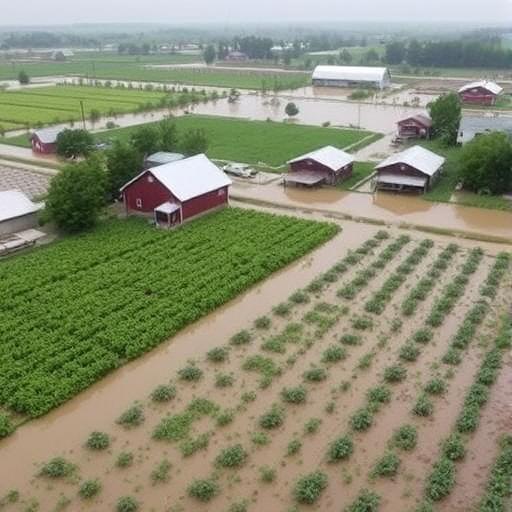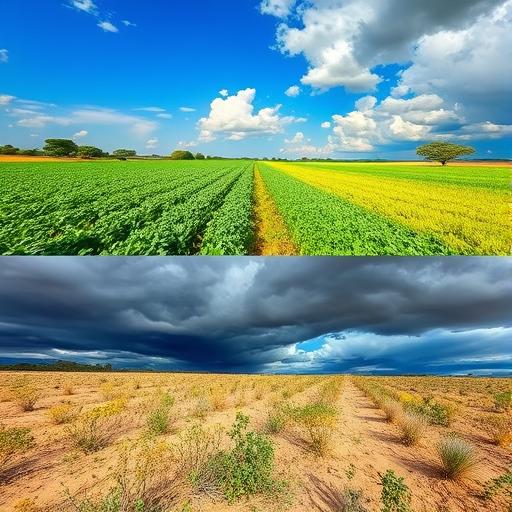Embracing Sustainability Through Art and Craft: A Path to a Greener Future

Embracing Sustainability Through Art and Craft
Embracing Sustainability Through Art and Craft: A Path to a Greener Future
The Intersection of Art, Craft, and Sustainability

Art and craft have long been powerful mediums for expression, reflection, and communication. In recent years, however, they have also emerged as potent forces for sustainability. The global climate crisis has ignited a movement among artists and craftspeople who recognize the impact that their work can have on the environment. By integrating sustainable practices into their creative processes, these individuals are not only making a statement but also paving the way for a future where art and environmental responsibility go hand in hand. Every brushstroke, sculpture, and handcrafted item can embody the principles of sustainability, making them more than mere objects of beauty—they become vital tools for change.
The principles of sustainability can be reflected in the selection of materials, techniques, and even the final message of the artwork. For instance, artists who choose eco-friendly paints, repurposed materials, or natural fibers are not merely reducing waste; they promote an ethos of accountability and respect toward nature. Crafting with intention inspires consumers to value artistry that prioritizes sustainability, ultimately contributing to a shift from mass production to thoughtful creation. Thus, the intersection of art and sustainability offers a promising avenue for addressing environmental concerns while enriching the cultural fabric of society.
The Role of Artists in Raising Awareness

Artists have always played a pivotal role in social change, and in the sphere of sustainability, they serve as powerful advocates. Environmental themes are increasingly prevalent in contemporary art, challenging viewers to confront their relationships with nature and prompting them to consider their environmental impact. Through engaging and provocative works, artists can spark conversations that resonate on both personal and societal levels. From powerful installations made of discarded plastics to immersive experiences depicting the effects of climate change, various artistic expressions serve the purpose of raising awareness and encouraging action.
Moreover, artists can utilize their platforms to educate audiences on sustainability practices. Workshops, community-based projects, and interactive installations not only showcase the viability of eco-friendly practices but inspire others to adopt them. By creating spaces for discussion and collaboration, artists foster a collective sensibility where sustainability becomes a shared goal. This transformative approach empowers communities to actively engage in ecological stewardship, reinforcing the idea that individual actions can collectively have a significant impact.
"Every act of creation is first an act of destruction." - Pablo Picasso
Integrating Sustainable Practices into Your Craft

While the journey of adopting sustainability in art can seem daunting, integrating sustainable practices into your craft can be both enriching and rewarding. Start small and gradually build your skills and knowledge in eco-friendly techniques. Many creative individuals find passion in repurposing materials that would otherwise end up in landfills—cans, textiles, and plastics can all find new life through artistic endeavors. This process of reuse not only breathes new life into discarded items but has the added benefit of igniting creativity in unique ways.
Seek to establish a zero-waste practice by planning your projects thoughtfully and minimizing excess resources. This could involve calculating the dimensions of your pieces accurately or finding creative ways to repurpose scraps and leftovers. Another potent example of sustainable practice is utilizing natural dyes and pigments derived from plants rather than synthetic options. Alongside reducing environmental footprints, these methods often imbue the artwork with unique textures and hues that reflect the beauty of nature.
Additionally, consider collaborating with local environmental organizations or other artists who share your passions. These partnerships can help amplify your impact and foster a sense of community around sustainability. You might offer workshops or classes focused on sustainable crafts or even organize community art projects that directly address environmental issues in your area. By intertwining your creative pursuits with sustainability initiatives, you will not only hone your craft but also instigate meaningful change.
How-To: Steps Towards Sustainable Crafting
- Research and select eco-friendly materials for your projects.
- Experiment with repurposing discarded items in your art and craft.
- Educate yourself on sustainable techniques, such as natural dyeing or zero-waste practices.
- Collaborate with fellow artisans or local organizations focusing on sustainability.
- Share your journey and inspire others to adopt sustainable art practices through workshops or social media.
The Economic and Emotional Benefits of Sustainable Art

Beyond its environmental implications, sustainable art and craft hold significant economic and emotional benefits. As society shifts toward valuing sustainability, consumers increasingly seek out handmade, ethically produced items over mass-market goods. This trend creates opportunities for artisans to cultivate niche markets that are profitable and aligned with their values. By tapping into the growing demand for sustainable products, artists can enhance their livelihoods while contributing positively to environmental initiatives.
Moreover, the emotional benefits of engaging in sustainable art can be profound. The act of creating mindful artwork fosters a sense of purpose and fulfillment. Artists often find joy in practices that reflect their values—they become connected to their materials, aware of the impact of their actions, and motivated to contribute to a better world. This mindfulness leads to a deeper appreciation for the creative process and often a heightened satisfaction with the final result. When art encapsulates a greater message, it has the power to resonate with others, fostering bonds between the creators and their audiences.
In addition, sustainable art projects often provide platforms for healing and community building. Collaborating with others around a shared mission nurtures connection and strengthens relationships. These positive social interactions can have a ripple effect, encouraging broader engagement with sustainability efforts and prompting deeper reflections on our roles in the ecosystem.
Inspiring the Next Generation of Sustainable Artists
To ensure that the values of sustainability continue to flourish in the realm of art and craft, it is essential to inspire future generations. There is immense potential in nurturing an awareness and passionate understanding of environmental stewardship among young artists. Educational institutions, community centers, and art organizations can create programs that emphasize sustainable practices, providing foundational skills while instilling a sense of responsibility toward the environment.
Workshops can be designed to teach young learners about eco-friendly techniques, such as creating art from natural materials or using recycled objects in their craft. Creating mentorship opportunities with established artists who focus on sustainability can also play a pivotal role in cultivating new talents and perspectives. As these future creators are guided in their artistic journey, they should be encouraged to explore their unique voices, developing authentic, environmentally-conscious expressions of their creativity.
Additionally, promoting sustainability in art can encompass curriculum development in schools. Educators can reinforce the connection between art and environmental responsibility by incorporating projects that challenge students to think critically about their material use and waste. By instilling a passion for sustainability, we can prepare the next generation of artists to lead innovative movements, advocating for solutions that protect and preserve our planet.
"The greatest threat to our planet is the belief that someone else will save it." - Robert Swan
Conclusion
The journey toward a more sustainable future through art and craft is both urgent and inspiring. By embracing eco-friendly practices, artists and crafters can wield their influence to foster change, raise awareness, and promote environmental stewardship. Each individual has the power to inspire others through the beauty of their creations and the intention behind their work. As we navigate this path, let us remember that every small action counts, and together, we can build a more sustainable world through our artistry. Be mindful of the materials you use, share your journey, and motivate others to join the cause. As we embrace sustainability in our crafts, we contribute not only to our communities but also to the health of our planet for generations to come. Take up your tools of creation and let your art be a catalyst for change! 🔥💪
Join the Movement Towards Sustainable Art! 🌟
Embrace your creativity and make an impact today. Your art can change the world!
